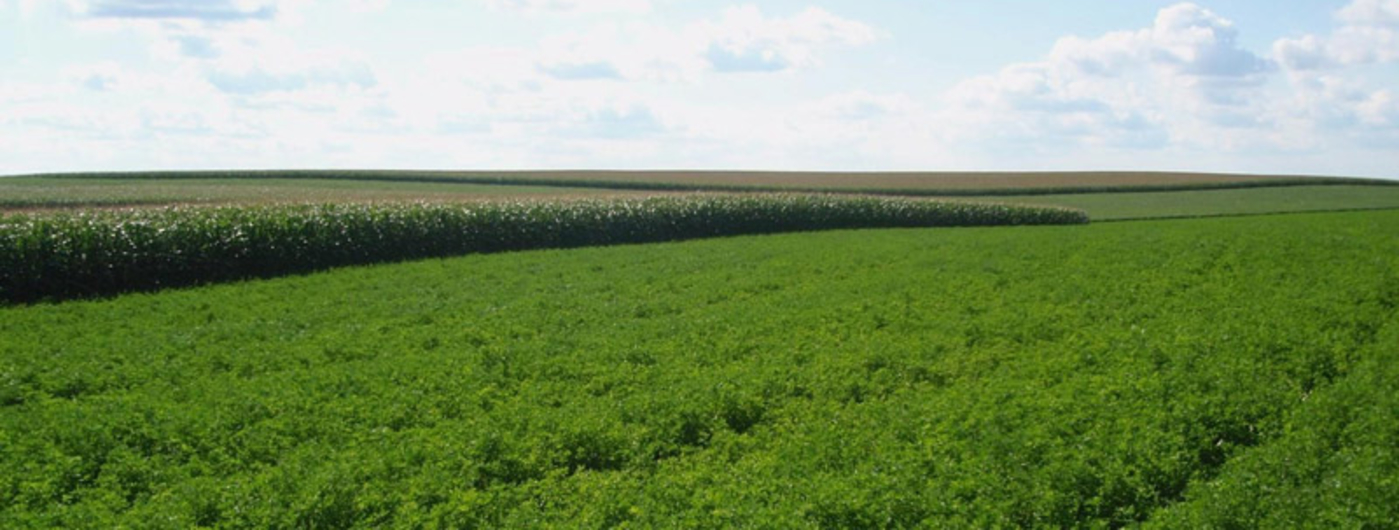Studies show that a longer crop rotation that includes alfalfa has the potential to increase soybean and corn yields. Such rotations provide more options for reducing agronomic inputs without sacrificing corn yield.
Advantages of forage legumes
A primary advantage of including forage legumes in the crop rotation is the nitrogen (N) credits provided to subsequent grain crops.
In addition, perennial forage legumes disrupt the life cycles of pests, such as corn rootworm and weeds. This protects against crop yield losses, while reducing crop-protection input expenses.
Forage legumes also enhance soil structure and tilth, while reducing soil erosion and organic matter loss. Under dry conditions, however, deep-rooted forage legumes such as alfalfa can reduce the amount of subsoil moisture available for the following grain crop.
Rotation study
From 1992 to 2007 at the University of Minnesota Southwest Research and Outreach Center near Lamberton, a four-year oat/alfalfa-alfalfa-corn-soybean rotation was compared with a two-year corn-soybean rotation within “zero-input,” organic, “low-input,” and “high-input” crop-management systems. This trial was established at every stage in both rotations, so each crop was present every year.
Averaged across years, soybean yield was 7 percent higher with the four-year rotation than the two-year rotation, regardless of crop-management system. For corn, however, the yield advantage due to the four-year rotation varied with management system and declined as the amount of agronomic inputs increased (Table 1).
Corn yield within the four-year rotation was greatest and similar under high-input, low-input and organic management systems. However, the greatest corn yield in the two-year rotation occurred only with the high-input system.
Table 1: Corn yields in two- and four-year rotations under various management systems
| Management system | Weed management | Nutrient application | Average corn yield: 2-year rotation | Average corn yield: 4-year rotation | Yield increase with 4-year rotation |
|---|---|---|---|---|---|
| Zero-input | Tillage only | None | 55 bushels per acre | 77 bushels per acre | 41% |
| Organic | Tillage only | Manure | 113 bushels per acre | 142 bushels per acre | 25% |
| Low-input | Tillage + banded herbicide | Banded fertilizer | 123 bushels per acre | 139 bushels per acre | 13% |
| High-input | Tillage + broadcast herbicide | Broadcast fertilizer | 151 bushels per acre | 146 bushels per acre | 0%* |
*Not significant at the 0.05 probability level.
Coulter, J.A., Sheaffer, C.C., Wyse, D.L., Haar, M.J., Porter, P.M., Quiring, S.R., & Klossner, L.D. (2011). Agronomic performance of cropping systems with contrasting crop rotations and external inputs. Agronomy Journal, 103, 182-192. http://dx.doi.org/10.2134/agronj2010.0211
Reviewed in 2021


